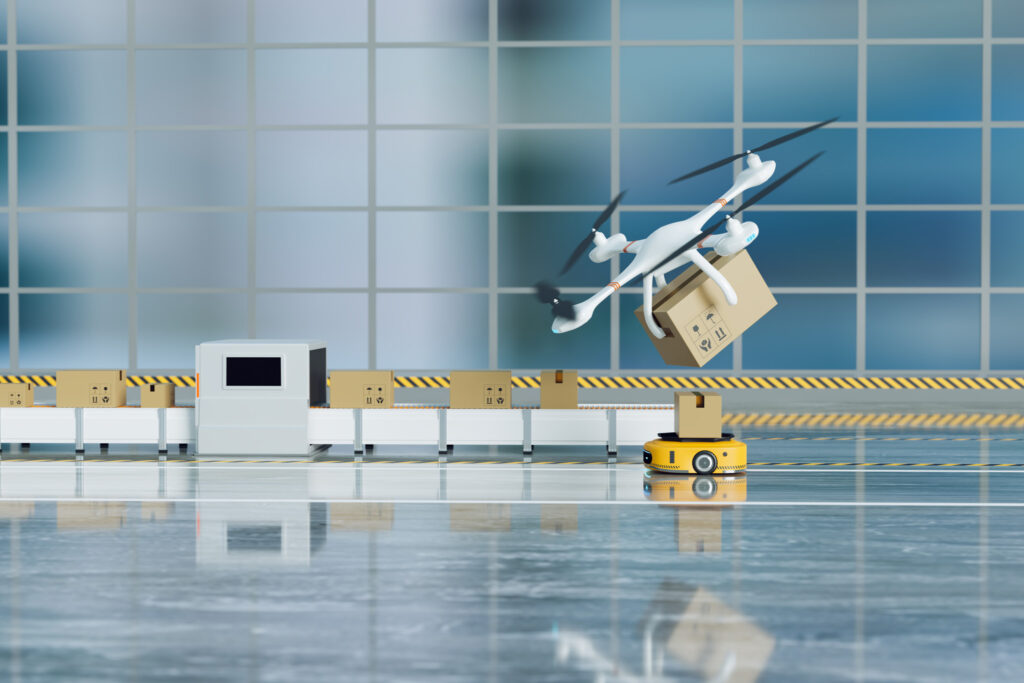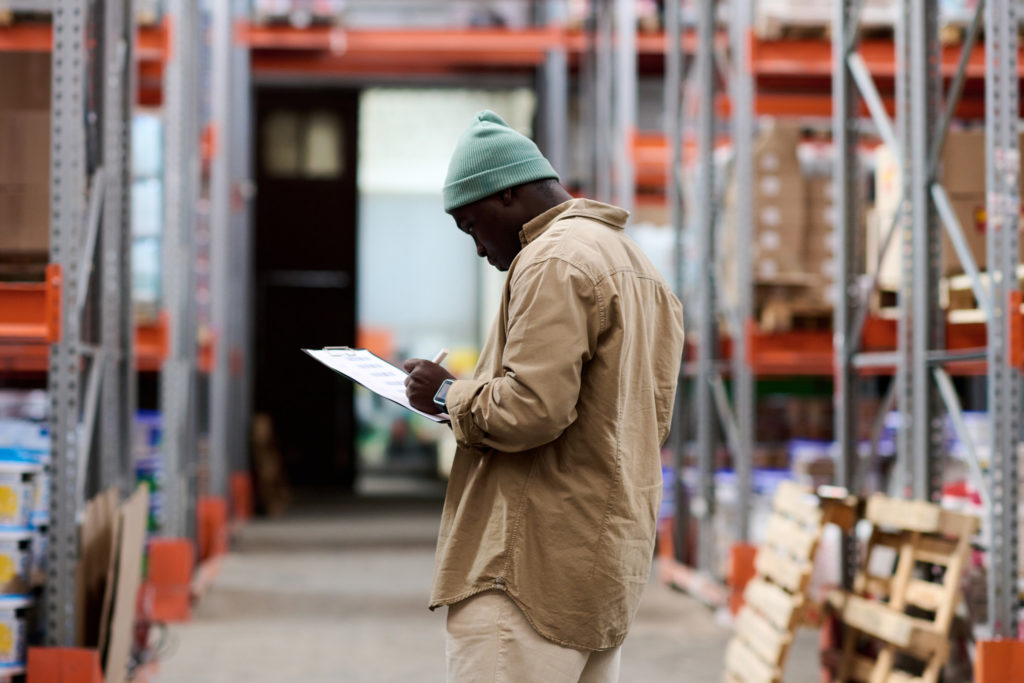Innovative drone technology is changing the logistics industry as we know it. Drone delivery in Canada has already made waves by shaking up how various delivery services ship products to their customers’ doors. What does the future hold for shipping and receiving businesses undergoing delivery drone integration?
Encore Deliveries delves into the details, exploring where, how, and when you might find more drones populating Canadian skies. We’ll discuss why you should consider them for your company’s logistics management.
What Do Delivery Drones Do?
Unmanned aerial vehicles (UAVs) have taken businesses and casual flight hobbyists by storm in recent years. These aircraft do not require pilots to operate. Many UAV operators use remote controls or ground control stations to direct their crafts.
Drones are an advanced type of UAV. Early versions of this technology might require remote manning from a human. However, recent developments allow artificial intelligence to navigate the crafts to their destinations. An ongoing study published by Fortune Business Insights predicts that drone innovations will exponentially increase through 2028, making reliable cargo drones easier to access and implement into logistics processes.
Where Can Companies Use Delivery Drones in Canada?
At first, you might limit drone logistics to rudimentary pizza delivery or remote shopping cart transports. However, drone designers continue making impactful strides in where and how facilities can use the technology. For example, Drone Delivery Canada Corp. (TSXV: FLT) (OTCQX: TAKOF) signed agreements with Edmonton International Airport to expand and improve route delivery options in 2024.
Aircraft routing and delivery is not the only logistics sector taking advantage of drone advancements. The facets listed below also increasingly incorporate them.
Residential
The pandemic introduced a substantial surge in citizens ordering necessities and commodities online. This sharp increase made shippers scramble to hire, onboard, and train enough talent to meet demands. Although ordering online still surpasses pre-pandemic habits, the gradual removal of shelter-in-place orders and other precautions allowed people to return to shopping at nearby retailers.
Delivery drones offer a scalable option for companies looking to maintain accessible online orders. As e-commerce demand fluctuates, companies can order drones according to their current needs.
Industrial
Drones have a place in manufacturing facilities as well. Team members gauge supply numbers and restock as needed. However, this simple task might involve wasting several minutes travelling from one side of the building to the other to procure the necessary inventory.
Including cargo drones in your management strategy can reduce the time an employee spends retrieving what they need. The drone can identify, pick up, and deliver the materials while your employee handles more pressing tasks, like manning machinery.
Medical
A 2021 Statista survey found that the healthcare and social work fields use drones predominantly for supply deliveries, mapping, and surveying. Drone delivery in Canada can meet each citizen’s medical needs regardless of location. Delicate or time-sensitive materials like medications, injections, or equipment can arrive at hospitals, labs, or even doorsteps in a timely fashion, preventing spoilage, damage, and other common logistics issues.
How Could Your Company Benefit From a Delivery Drone?
You might want to understand how to practically apply drone delivery to improve your company’s internal logistics processes. Here are some key considerations:
Greater Access for More People and Businesses
Drone delivery companies enable more customers to access ordered shipments promptly. Some addresses are on routes with limited highway access. People who live or have businesses in rural areas might struggle to receive purchases on time.
Plus, Canadian weather patterns significantly inhibit traditional deliveries by truck and plane. Winter weather makes navigation challenging for pilots and drivers. Increased Canada drone delivery might mitigate these unpredictable obstacles.
Prompt Delivery Times
Many manufacturing supplies, inventory items, and personal purchases have an expiration date. Holidays present a significant challenge as demands sharply increase while suppliers struggle to keep up. Plus, drivers must navigate ground infrastructures, juggling detours, wrecks, and road blockages.
Each occurrence can push much-needed products and supplies further from their projected delivery time. Drones navigate above this congestion, ensuring shipments arrive at their destinations on time.
Fewer Resources Used
Each day, shipping vehicles like trucks, boats, and airplanes use excessive fuel quantities. Plus, the materials required to construct these vehicles take more time to source and put together. Drones are smaller and lighter, primarily using battery sources to power them from destination to destination.
Logistics Precision
The last-mile delivery is the step in the production process where the purchase leaves the shipping station to arrive at its final destination. It connects the customer with the company, and that connection is often in the delivery driver’s hands.
Numerous unknowns can influence last-mile delivery, impacting the customer’s relationship with the company. Drones can ensure that products and customer relationships remain intact with precise navigation and obstacle avoidance.
Environmental Sustainability
Consumers have become increasingly aware of how each purchase affects the environment. Every step of the delivery process, from adding a product to a digital cart to dropping the product off at the customer’s doorstep, causes greenhouse emissions that pollute the environment. It also stretches non-renewable resources thinner and thinner despite global efforts to procure alternative solutions.
Drones can positively impact the environment by:
- Reducing packaging waste caused by product returns or damage
- Limiting the use of petroleum for vehicles
- Improving delivery efficiency
When your target market learns that your company uses drones in accordance with environmental best practices, they may be more inclined to purchase your products.
What Drone Delivery Companies Must Consider
Reaping these benefits means detailed planning before building your company’s drone fleet. How will you plan around the listed considerations to ensure your endeavours succeed?
- How do drones fit into customer expectations and desires?
- What talent will you need for accurate flight planning and infrastructure accommodations?
- How can you ensure your fleet keeps up with growing environmental consciousness?
Encore Deliveries Specializes in Scalable Delivery Solutions Like Cargo Drones
Drone delivery in Canada is closer than you might think. Stay updated with cutting-edge solutions and recent logistics news from Encore Deliveries.
Frequently Asked Questions:
1: How do delivery drones benefit businesses?
- Delivery drones offer faster delivery times, increased access to remote areas, reduced resource use, enhanced precision, and improved environmental sustainability.
2: Where are delivery drones currently being used in Canada?
- In addition to residential delivery, drones are being used for industrial purposes in manufacturing facilities, and to deliver medical supplies. There’s also a focus on expanding their routes with projects like the Edmonton International Airport collaboration.
3: What are some challenges that drone delivery companies need to address?
- Companies need to carefully integrate drones into customer expectations, hire skilled flight planning talent, and ensure their practices align with environmental sustainability goals.
4: How do drones contribute to environmental sustainability?
- Drones can reduce packaging waste, minimize the use of fossil fuels, and improve overall delivery efficiency, lessening environmental impact.



 Who We Are
Who We Are
 Our Advantages
Our Advantages
 Case Study
Case Study





